5 Questions for David Stark
Famed party designer to appear at MOCA
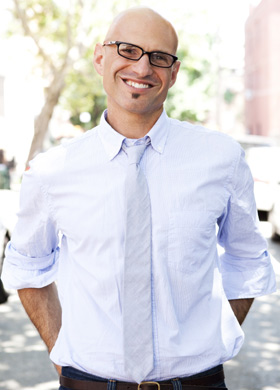
On Saturday, May 4th at 3:00 p.m., Miamians will have the opportunity to learn how to make their next event a masterpiece. David Stark’s latest book – “The Art of The Party” – takes readers through the creative journey behind 27 unique parties, demonstrating how with just the right element or personal touch, any event can be transformed into a masterpiece.
Stark was the creative tour de force behind MOCA’s 15th Anniversary Celebration in 2012 and will present “The Art of the Part”y at MOCA. Stark is one of the most sought after event designers in the country, having designed innovative and groundbreaking special occasions for celebrities like Beyonce Knowles and Jon Stewart, major corporate events for Target, Condé Nast, and the Huffington Post, and fundraising galas for The Metropolitan Opera, MoMA and The Whitney Museum of American Art. Stark will outline his design philosophy and creative processes, as well as sign copies of The Art of The Party.
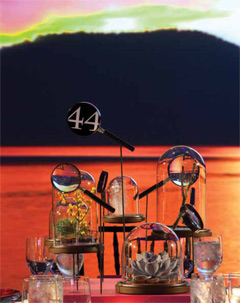 To get ready for his personal appearance in Miami, SocialMiami had five questions for the famed designer.
To get ready for his personal appearance in Miami, SocialMiami had five questions for the famed designer.
When learning about a new client, what initially leads you in one direction or another?
Our job is to get into the heads and hearts of our clients. There is such variety in our work – drop dead florals one day, wild, conceptual installations the next and it is not because we have a million different personalities. It’s because we are designing for individual people and specific organizations that have varying goals, particular likes and dislikes, a wide range of budgets, and occasions that run the gamut. We spend a lot of time getting to know our clients, finding out what they love, what they dislike, and what their dreams and goals are, and along the way, ideas percolate through brainstorming as a team. It’s very much like designing a stage set for a play. That set needs to be the PERFECT context for the drama to unfold in.
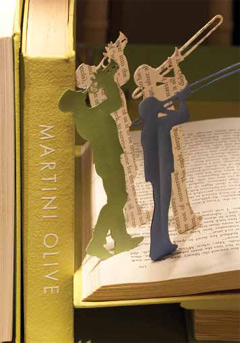 How is Miami’s style evolving and how does a Miami event differ from events in other parts of the country?
How is Miami’s style evolving and how does a Miami event differ from events in other parts of the country?
As more and more of the “starchitects” of the world (Frank Gehry, Herzog and de Meuron, and Zaha Hadid, for instance) build cutting edge structures here and as the influx of international residents and visitors expands, Miami is becoming more sophisticated daily. This is certainly reflected in the event scene.
It used to be all about the DJ at a Miami party, but now, parties are live theater where the setting, the food, and the surprises are all equally considered. That was certainly key when we were planning and designing the 15th Anniversary gala for MOCA. Elevating the event into the realm of installation art, the evening became a living, breathing extension of the fabulous museum.
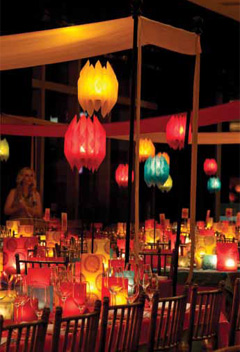 One of the amazing things that differentiate Miami events from ones in other parts of the country: people really get dressed! That may be a direct reaction to the casual, pervasive beach culture. A party provides such a wonderful opportunity to dress up and the people really do. I love that!
One of the amazing things that differentiate Miami events from ones in other parts of the country: people really get dressed! That may be a direct reaction to the casual, pervasive beach culture. A party provides such a wonderful opportunity to dress up and the people really do. I love that!
What is the signature element in your creative process? What drives you?
Our goal is to make art. We never think about decorating the room. We think about how to make an experience, how to make an occasion that people will remember forever, and as such, we approach each event as a three dimensional art piece or a painting you can hang out in.
For those who like to “do it themselves” for smaller parties like birthdays, quinces or Bar Mitzvahs, how should they approach the task creatively? Any words of advice?
Don’t limit yourself with materials. We find inspiration and materials for décor everywhere from the hardware store to the supermarket. While my first love was flowers and it is what got me into the event business in the first place, having a party doesn’t mean you have to use flowers. I view flowers as simply one of the tools in the tool box and sometimes they are the perfect tool to use, but I am equally in love with the world of materials beyond flowers. Paper, art supplies, paint, string, rope, fruit; anything really can make décor magic. Open your mind to the possibilities.
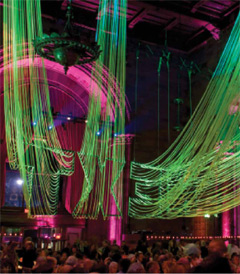 Since this book signing is happening in conjunction with MOCA and your book is titled – “The Art of the Party” – are there curatorial aspects to what you do? How is your job similar to that of a museum curator?
Since this book signing is happening in conjunction with MOCA and your book is titled – “The Art of the Party” – are there curatorial aspects to what you do? How is your job similar to that of a museum curator?
There is quite a bit of similarity, actually. We often wear multiple hats, and while on one hand, we are the artist creating the artwork in the exhibition, since we plan the whole event, we also play that role of curator bringing together the right balance of food, entertainment, lighting, and more, finding the relationship to the venue, and inventing the language that sucks the guest in. I think of the curator as the ring leader of the circus. He or she tells and shapes a magic vision. It’s an honor to be related, even ever so slightly, to that esteemed group of story-tellers.


